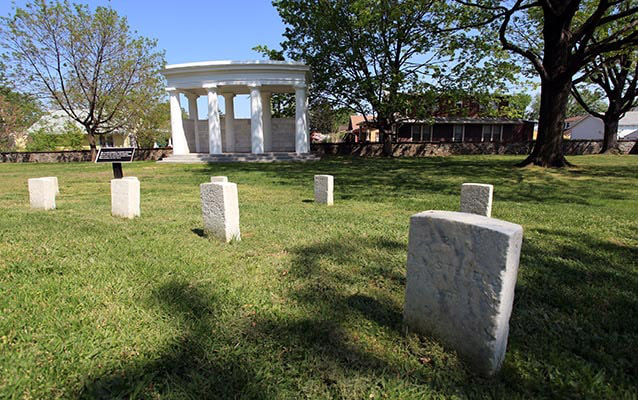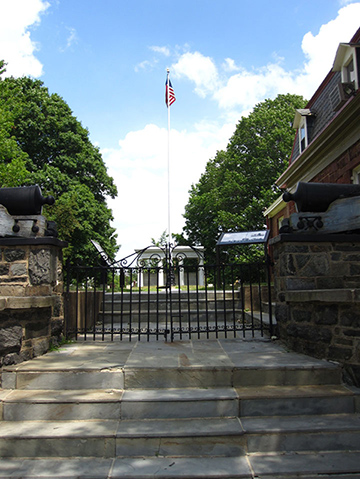Battleground National Cemetery (Reservation 568) is approximately six miles north of the United States capital and two miles south of Silver Spring, Maryland. It was founded following the Battle of Fort Stevens, July 11-12, 1864. The cemetery is located on a portion of the battlefield approximately a half-mile north of Fort Stevens, one of the sixty-eight forts built as part of a defensive ring around Washington during the Civil War.
“A cemetery, to contain the bodies of those who fell in defence of the nation’s capital, was laid out near Fort Stevens on the spot consecrated by their blood.” Report of the Secretary of War, 1865

NPS
Battleground National Cemetery was founded following the Battle of Fort Stevens, which took place in July of 1864. Fort Stevens guarded the Seventh Street Turnpike (present-day Georgia Avenue), which was one of the major routes into the capital from the north.
On July 9, 1864, Confederate General Jubal Early led his troops towards Washington following the victory at the Battle of Monocacy. On July 11th and 12th, fighting broke out between Union and Confederate troops at Fort Stevens, the only battle to take place within Washington during the war. The Union troops successfully fought off the Confederate forces as they tried to invade the capital. Battleground National Cemetery was established shortly after the battle for the burial of Union soldiers.

NPS
Battleground National Cemetery is significant for its association with the Civil War and as one of the first national cemeteries. As head of the agency responsible for the recovery and burial of Union dead, Quartermaster General Montgomery Meigs was following orders issued in 1862 by the War Department and acts passed by Congress regarding the acquisition of land for the burial of soldiers.
Battleground National Cemetery’s Meigs-designed lodge and maintenance building, the stone walls, central walkway and the arrangement of the headstones, as well as the headstones themselves, maintain much of their historic appearance. These features are emblematic of early national cemeteries. During the 1870s, Meigs made suggestions for the improvement of the landscapes at the national cemeteries, which resulted in the planting of trees, flowers and Osage orange hedges at Battleground and other cemeteries.

NPS
At the end of the nineteenth century, veterans and states began to honor soldiers who fought in the Battle of Fort Stevens by erecting monuments at the cemetery. In 1891, a memorial to the 98th Pennsylvania Volunteers was raised. It was followed by the 1904 monument to the 122nd New York Volunteers, the 1907 memorial to Company K of the 150th Ohio National Guard, and the 1914 statue honoring the Twenty-Fifth New York Volunteer Cavalry.
Battleground National Cemetery was listed on the National Register in 1980, with the period of significance 1864 to 1921. The 2011 Cultural Landscape Inventory recommended extending the period of significance to 1936, the year the last burial took place. The National Register lists Battleground National Cemetery for its military significance. The cemetery is also historically significant in the areas of landscape architecture, social history, and architecture, and it retains integrity to the period of significance (1864-1936).
While there have been some changes to the landscape -- most notably the loss of historic vegetation -- the overall integrity of Battleground National Cemetery is high and the landscape invokes the historic character of the property.
Quick Facts
- Cultural Landscape Type: Designed
- National Register Significance Level: National
- National Register Significance Criteria: A,C,D
- Period of Significance: 1864-1936
Landscape Links
Last updated: October 7, 2021
